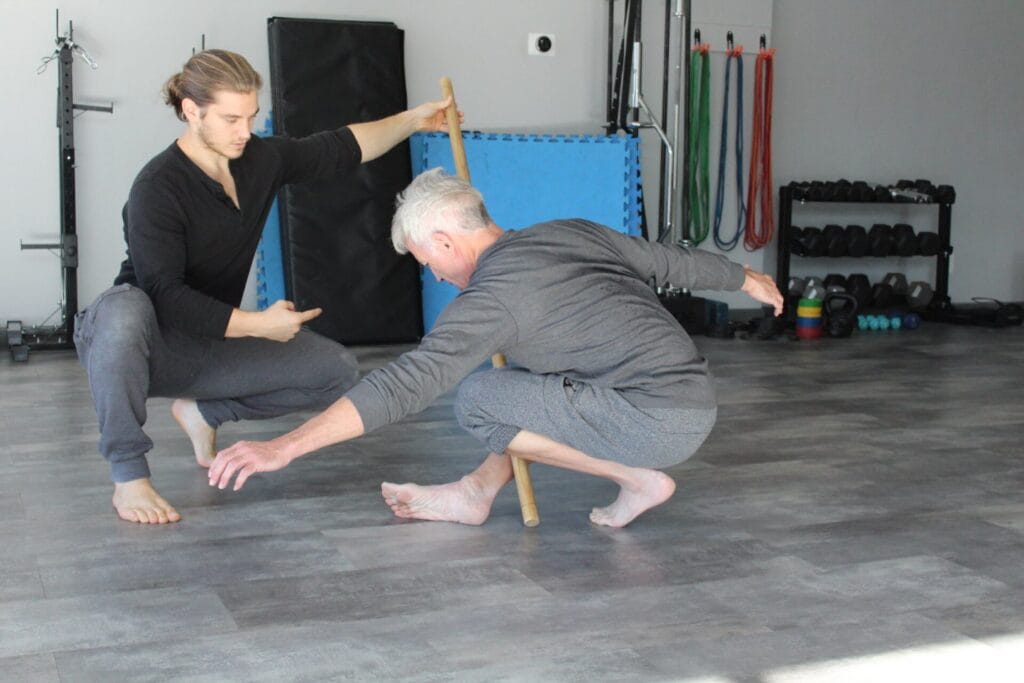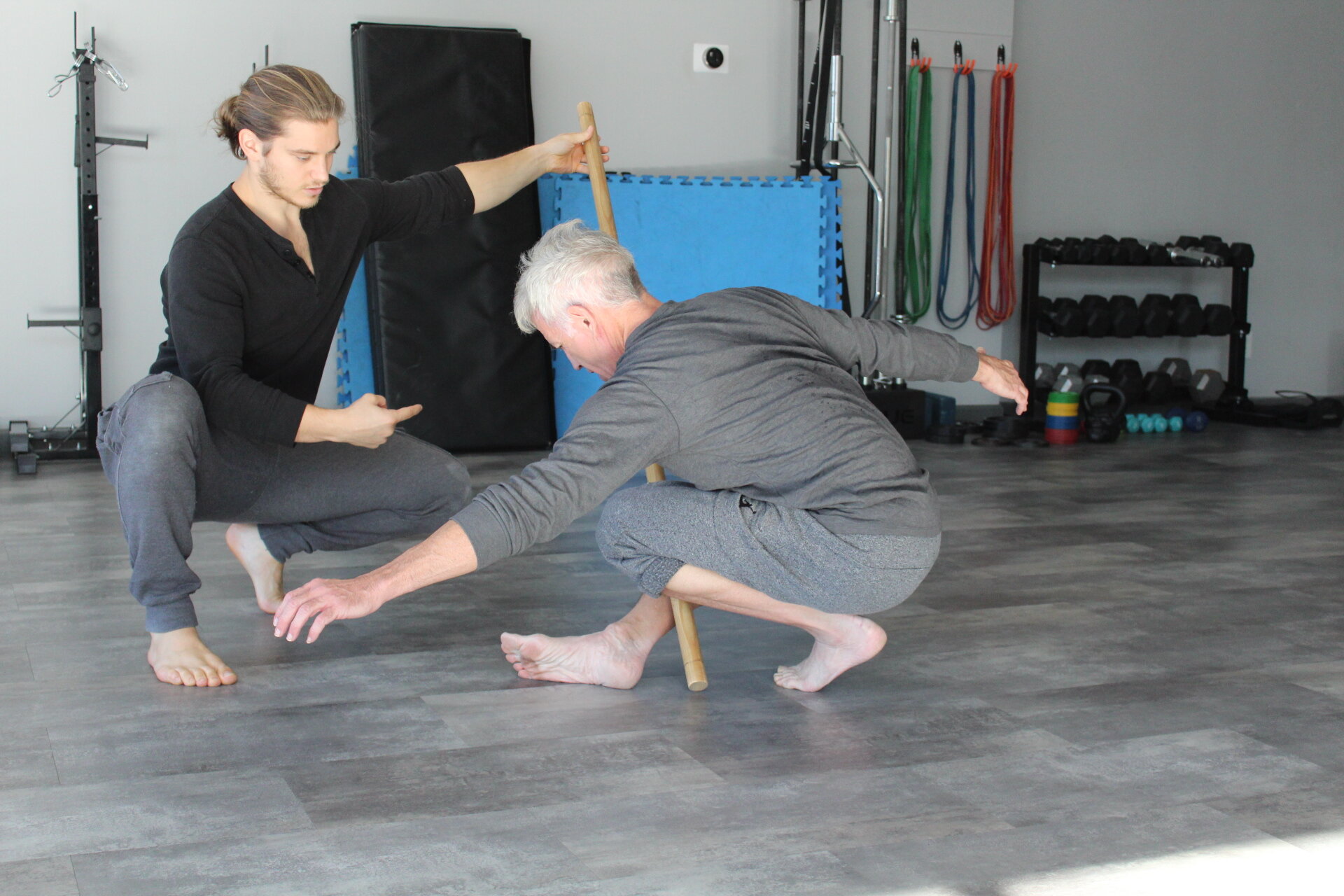Frank working with a kinetic koan.
Today I want to talk about why there are SO many mechanics driving Ferrari’s to work.
After the first sentence I am sure you realize something is off here. In fact, when have you EVER seen a mechanic driving a luxury car around? They are the ones fixing the cars, not actually taking them out for a spin. Take the opposite example. When does a NASCAR driver get out during his pit stop to help change the tires? Oh right, he doesn’t. He is too busy driving the car, and with an average pit stop of 12-16 seconds, he has no time to spare.
We are going to use this analogy today for the body, and while we are not a machine and it is not perfect, it will suffice.
I first learned about the driver and the mechanic in a workshop taught by Ido Portal. It was something I had thought about quite a bit but did not have a way of putting it that so quickly resonated.
First, lets define the two and talk about their purpose and desire.
The “Driver” is all about taking the car out for a spin. The driver seeks high performance and seeing what it can really do. Top speeds, braking time, handling, etc. are all on the drivers mind.
The “Mechanic” is all about fine tuning and fixing the car. The mechanic seeks flaws that can be corrected, inefficiencies that can be improved, and wants to put the best functioning machine out there possible.
This sounds like a harmonious relationship, they complement each other nicely. The car will surely break down if the driver gets the only say, so the mechanic will simply fix anything that needs fixing after the ride!
Right?
Maybe, but what if the driver never brings the car back to the mechanic. What if the mechanic never tells the driver that the car is ready to drive?
This is a common dilemma and one that is all too familiar in the “fitness industry”. There are those who see the body as a machine that is far from optimized. needs tons of mechanical work, and therefore should be limited from driving until a good mechanic can finish the job. These people are scared of sitting down for 10 minutes in case of shortened hip flexors and worry that their hip internal rotation is not sufficient for…well, anything. All of their “training” is spent trying to “fix” what they deem as broken or malfunctioning.
The other side are the drivers. These are the people developing gross imbalances, neglecting any tune ups, and driving their car full speed ahead. Daily max outs, every session ends on the floor in a sympathetic state and a pool full of dopamine in their brain. Cool-down? No. Just leave the car in idle and get ready to max again tomorrow.
I’m sure you can realize by now that what should exist is a bit of a combination. The mechanic should genuinely look for flaws and inefficiencies, and look to improve them. The good news? When a good mechanic looks to fix a problem, it gets fixed. That means more time to drive and the same problem doesn’t appear day after day. The driver should enjoy and experience driving their car. They shouldn’t be thinking about all of the things that may/could go wrong, or feel an injury giving them trouble during every session, limiting them from testing out the throttle. This could affect your strength, mobility, coordination, recovery time, and more.
If you are looking to balance out the relationship and make sure you don’t turn into a neurotic mess here is a suggestion for finding balance.
Those who are less experienced in physical training will need to spend more time as “the mechanic”. These people are typically less mobile, lacking strength, and learn patterns slowly. You will need to structure intelligent warm-ups and even use strength training to address the weak links in the chain. These things will hold you back when you want to drive, so better to build a strong foundation and built a solid “car” from the inside out.
As you gain more and more experience, you get to “drive” a bit more. You can test your limits, even abuse the car a little bit, knowing that it will recover. The mechanic will become more efficient, with less to fix and will spend more time “tuning up”. This could be improving or maintaining the qualities we spoke of before, or spending extra time and attention on an area that sore or feels stiff.
You are never just the driver, or the mechanic. In fact, you will find yourself throughout your life shifting back and forth between the two, sometimes working with one more than the other. This is ok. Being able to improve your body is a great thing. Being able to enjoy its improvements is even better.
You only get one body, and nothing good comes from zero risk. Get out there and drive, but make sure you tune up first. Who are you? Are you the driver or the mechanic? Do you have a bit of both? Let me know in the comments below.



Kevin, this is so well written! I began at Locomotion in chronic pain after 2 “mechanical” years (FRC, DNS, Z-health, foundation training….). Joining Loco is about learning the language of human movement, how to use the incredible/difficult body I learned to take such good care of. You guys have definitely taken me from mechanic to driver!!! Every class is a huge stretch to leave my mechanics comfort zone. And hugely worth it.
Thanks Jen 🙂 I am so happy to hear that! Anyone looking to get the most out of the "driver" passes through the "mechanic" stage. This is a necessary step and helps you perform better in the long run! Those are good tools that you found and used.